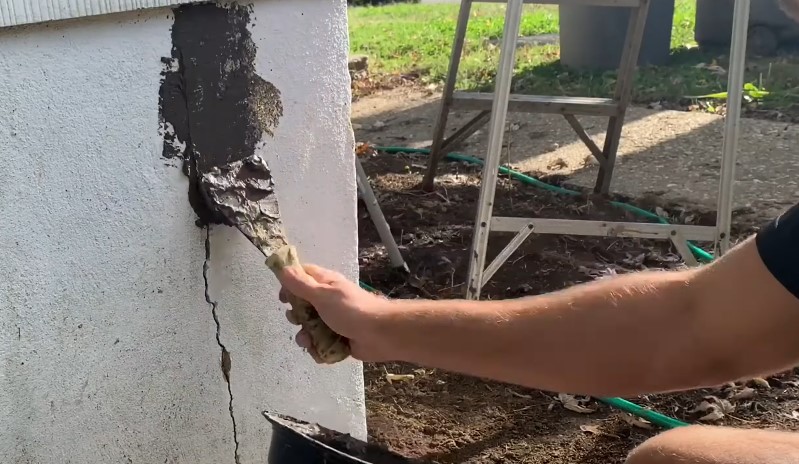Homeownership comes with ongoing responsibilities that extend far past the day of purchase.
Regular upkeep prevents minor issues from turning into major and costly repairs.
Experts recommend budgeting between 1% and 3% of your home’s value each year for maintenance to stay ahead of problems.
Proactive planning does more than save money; it extends the life of household systems, boosts efficiency, and helps retain property value.
A structured maintenance plan provides peace of mind and ensures small tasks do not get overlooked.
Monthly Maintenance Tasks
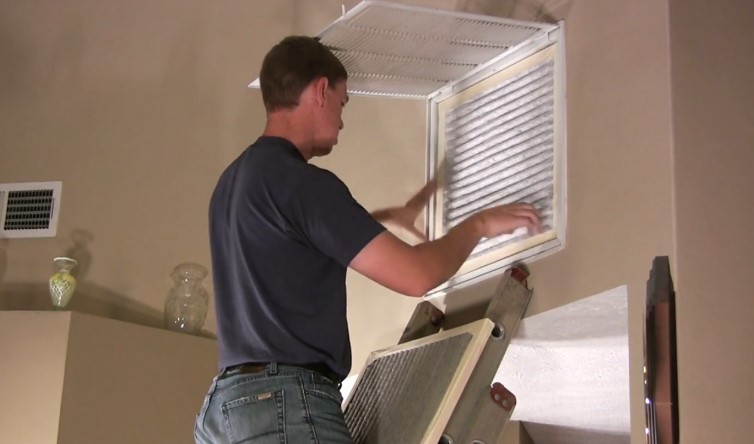
Every month brings an opportunity to safeguard a home with simple yet powerful habits. Consistency ensures systems remain efficient, repairs are minimized, and unexpected breakdowns are avoided.
Regular checks allow problems to be identified when they are still small, reducing the chances of costly emergencies later.
To make these tasks easier to follow, homeowners can rely on a checklist that becomes second nature over time.
HVAC filters require special attention each month. Cleaning or replacing filters keeps airflow unrestricted and prevents the system from overworking.
A clogged filter not only strains the unit but can also affect indoor air quality. In addition to HVAC upkeep, plumbing inspections under sinks and around toilets help detect leaks that might otherwise remain unnoticed until water damage spreads.
Safety should remain a priority. Smoke and carbon monoxide detectors need testing once a month to ensure alarms work when most needed.
Ground Fault Circuit Interrupter (GFCI) outlets should also be tripped and reset during these inspections. Doing so confirms they can shut off electrical flow during surges, offering protection in kitchens, bathrooms, and outdoor areas.
Household appliances benefit greatly from monthly attention as well. Kitchen range hood filters gather grease and must be cleaned to avoid buildup. Dryer vents collect lint quickly, creating a fire hazard if ignored.
Garbage disposals last longer and stay odor-free with routine flushing.
Seasonal Maintenance
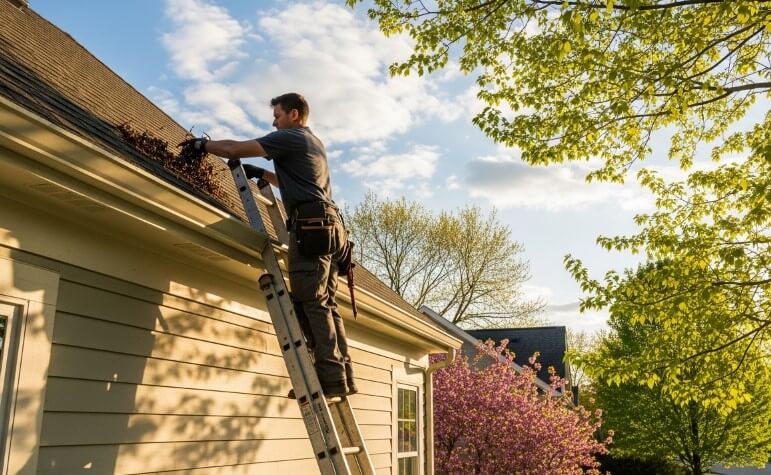
Every season introduces new challenges for a home.
Weather patterns, temperature shifts, and outdoor growth cycles affect different parts of the property.
Dividing tasks into seasonal categories makes planning easier and ensures no area of the home is neglected.
Spring
Warmer weather signals the time to reverse winter’s impact. Roofs and gutters should be checked carefully for damage caused by ice or snow.
Engaging a professional Gutter Cleaning service ensures clogs do not result in water damage.
Windows, siding, and doors also require attention; washing, repairing, and re-caulking keep moisture out and maintain efficiency.
Yards and gardens thrive in spring when pruning, fertilizing, and irrigation checks are completed.
Indoor work includes servicing air conditioning units, deep cleaning kitchens and bathrooms, flushing the hot water heater, and vacuuming refrigerator coils.
Here’s what should be done:
- Inspect roof and gutters for damage
- Hire a professional gutter cleaning service if needed
- Wash and repair siding, windows, and doors
- Prune trees and shrubs, fertilize lawns, and test irrigation systems
- Service A/C units
- Deep clean kitchens and bathrooms
- Flush hot water heater and vacuum refrigerator coils
Summer
Summer creates ideal conditions for outdoor repairs and upkeep. Outdoor A/C units should be kept clear of vegetation and debris to ensure proper ventilation.
Decks benefit from re-sealing to withstand heavy use and sun exposure.
Foundation cracks and siding should be repaired quickly before heat or storms worsen them.
Indoors, water-related appliances such as dishwashers, sinks, and bathrooms should be inspected for leaks.
Exhaust fans in kitchens and bathrooms need cleaning to maintain airflow and remove humidity.
Tile grout should be resealed to prevent long-term water penetration.
Here are the main summer tasks:
- Trim around outdoor A/C units
- Reseal decks and repair cracks in siding and foundations
- Inspect dishwashers, sinks, and bathrooms for leaks
- Clean exhaust fans in kitchens and bathrooms
- Reseal tile grout
Fall
Autumn signals preparation for winter. Heating systems should be serviced, and filters replaced to ensure efficiency. Radiators may require bleeding to release trapped air.
Preparation involves insulating pipes, sealing gaps around doors and windows, and storing outdoor furniture.
Safety measures should not be overlooked; chimneys and fireplaces need inspections, while smoke and carbon monoxide detectors should have their batteries replaced.
Here are some fall tasks for you to check out:
- Service heating units and replace filters
- Bleed radiators if needed
- Clear gutters of leaves and check for roof issues
- Insulate pipes and seal gaps around doors and windows
- Store outdoor furniture
- Inspect chimneys and fireplaces
- Replace batteries in safety detectors
Winter
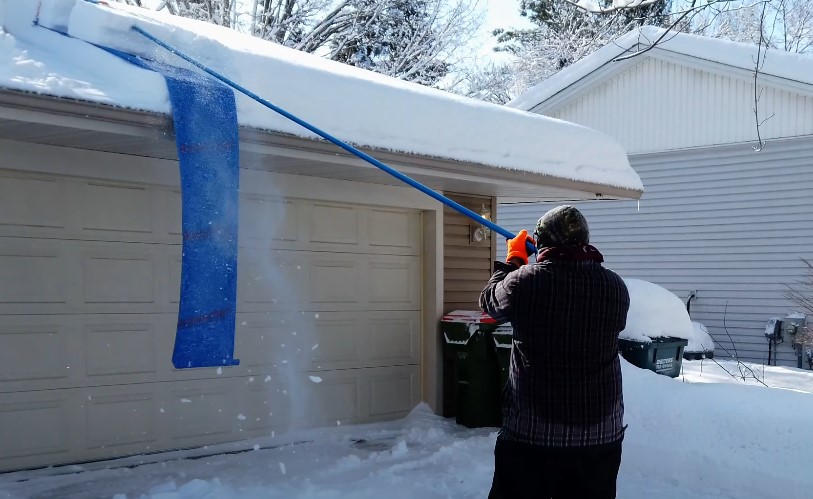
Cold months present specific hazards that require focused care.
Exterior inspections help identify storm or ice damage.
Roofs must be checked for ice dams that can cause water leaks. Basements should be inspected regularly for leaks or signs of excess moisture.
Maintaining heat prevents frozen pipes and related disasters.
Refrigerator coils and drip trays should be cleaned mid-season for efficiency.
Stocking up on de-icing materials keeps walkways safe, while rodent prevention measures such as traps safeguard against pests seeking warmth indoors.
Check out some winter tasks:
- Inspect exterior for storm and ice damage
- Monitor roofs for ice dams
- Check basements for leaks
- Maintain heating levels to prevent frozen pipes
- Clean refrigerator coils and drip trays
- Stock de-icing materials
- Set traps or apply pest control measures
Annual Tasks
Every year, homes require a thorough round of maintenance tasks that go beyond the monthly and seasonal routine.
Setting aside a specific month for these chores, such as the beginning of the year or during spring, makes it easier to keep them consistent.
Plumbing systems benefit from draining and flushing the water heater once annually. Sediment builds up over time, reducing efficiency and potentially damaging the unit.
Garage doors should also receive attention; lubricating springs ensures smooth operation and reduces wear on the motor.
Safety checks play a large role in annual upkeep. Fire extinguishers must be inspected to confirm they are charged and ready.
Bathroom exhaust fans should be cleaned to remove accumulated dust and moisture buildup that encourages mold.
Appliances require deeper inspection at least once a year. Refrigerators should have their coils cleaned, dishwashers checked for leaks or clogs, and washing machines inspected for hose wear.
Every 2–5 Years
Some tasks fall outside the yearly cycle but remain critical for preserving the home’s value and functionality.
Air quality improves with professional HVAC duct cleaning every few years.
Dust, allergens, and debris accumulate in ductwork, reducing system efficiency and indoor air quality.
Resealing grout in kitchens and bathrooms every few years prevents moisture infiltration and keeps spaces looking clean.
Pest inspections should not be neglected.
A professional termite inspection every few years is a small investment compared to the extensive damage termites can cause when left unchecked.
Paint touch-ups inside and outside the home provide both aesthetic refreshment and added protection for surfaces.
Long-Term Maintenance (5–15+ Years)
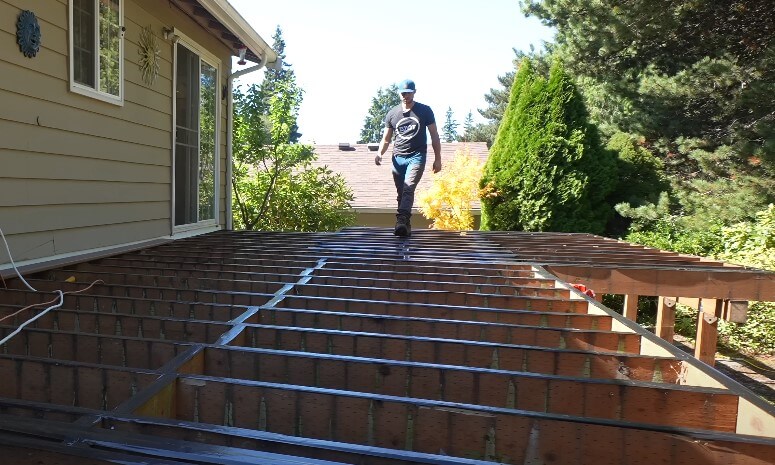
Big-ticket replacements and renovations are part of homeownership, typically required every decade or so.
Planning ahead for these investments avoids financial strain when systems reach the end of their lifespan.
Major appliances such as dishwashers, microwaves, and refrigerators typically last 10–15 years before efficiency declines.
Roofs have an average life of 20–30 years depending on material and maintenance, while HVAC systems usually require replacement after 15–20 years.
Decks and outdoor structures eventually weaken under weather exposure and may need rebuilding or replacement.
Fixtures inside the home also age. Faucets, sinks, and other plumbing components often wear out within 10–15 years.
Smoke and carbon monoxide detectors, though easy to overlook, should be replaced entirely once they reach 10 years of service.
The Bottom Line
Proactive maintenance spares homeowners from surprise expenses and stressful emergencies.
A carefully crafted checklist extends the life of vital systems, preserves property value, and ensures comfort year-round.
Plans should always be tailored to the age of the home, local climate, and installed systems.
Digital calendars or specialized apps help schedule recurring tasks and provide reminders.
A steady approach to home maintenance pays off in savings, safety, and peace of mind.

